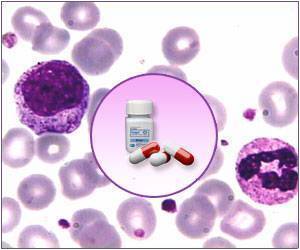Newer treatments of GISTs are being investigated in patients KIT and PDGFRα gene abnormalities. Liquid biopsies detect resistance to anti-cancer treatment.
Highlights
- Cancer treatment is moving from generalized approach to a personalized approach
- Newer drugs are being developed for cancers like gastrointestinal stromal tumors (GISTs) in patients with specific genetic abnormalities
- Liquid biopsies are used to detect treatment response and tumor gene resistance to treatment in a blood sample without the need for repeated tumor biopsies
Personalized treatment has its roots in the understanding of the molecular composition of tumors and using drugs that will act at a particular target – a type of therapy called targeted therapy.
Two ongoing studies highlighting the effectiveness of treating patients with gastrointestinal stromal tumors (GISTs) with specific genetic abnormalities have been presented at the 28th EORTC-NCI-AACR Symposium on Molecular Targets and Cancer Therapeutics at Munich, Germany.
GISTs are digestive tract tumors that may be benign or malignant and are usually located in the stomach and intestines. Localized tumors can be treated through surgery. Targeted therapy with imatinib mesylate and sunitinib are used in the treatment of GISTs that cannot be surgically treated. These medications target molecules only in cancer cells without affecting normal cells, thereby causing less side effects.
Genetic factors are often responsible for the development of GIST. GISTs usually occur due to mutations in the KIT and PDGFRα genes, which regulate the production of proteins from the family called tyrosine kinases. Abnormalities in these genes cause cells to proliferate, resulting in cancer. Drugs like imatinib mesylate and sunitinib target tyrosine kinase but may become infective after some time due to the development of resistance.
In a small clinical study, researchers found that a drug under development, currently called BLU-285, is effective in the treatment of GISTs with KIT or PDGFRα mutation. The new drug overcomes the mechanism that makes drugs like imatinib ineffective.
- The drug appears to have remarkable anti-tumor activity. However, the study is still in its initial stages and long-term effects are not yet known
- The drug appears to be relatively safe.
- Nine people discontinued taking part in the study since the cancer continued to progress in these patients.
- Tissue biopsy is an invasive test and causes some discomfort to the patient
- The patient has to bear an additional cost for the procedure
- There is a possibility of injury to normal tissue during the procedure
Another study presented at the same conference evaluated the use of liquid biopsies in cancer. The patients’ blood was collected when they stopped responding to cancer treatment and the cancer started to progress. During the test, the DNA was analyzed to detect which mutations could have possibly led to the resistance to treat. The test could detect the following:
- Molecular changes responsible for resistance to treatment in nearly 80% of patients
- Multiple resistance mechanisms. The primary tumor and each of its metastases may have a different pattern of tumor resistance. It is not possible to detect these multiple resistance mechanisms through biopsy of a single tumor, but is possible through liquid biopsy. Liquid biopsies could detect additional alterations as compared to those detected by tumor biopsy.
- Novel mechanisms of resistance. This knowledge can be used to develop treatments to overcome resistance.
References
- ENA2016 NEWS: ‘Revolution in our understanding of cancer’ - (http://www.ecco-org.eu/Global/News/ENA/ENA-2016-PR/2016/11/ENA2016-Revolution-in-our-understanding-of-cancer)
- General Information About Gastrointestinal Stromal Tumors - (https://www.cancer.gov/types/soft-tissue-sarcoma/patient/gist-treatment-pdq)
Source-Medindia










